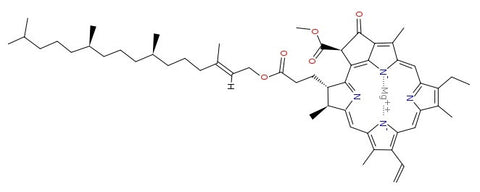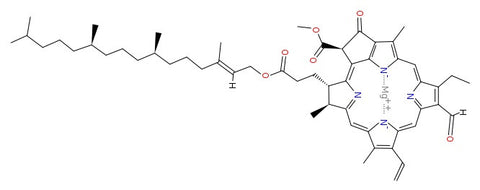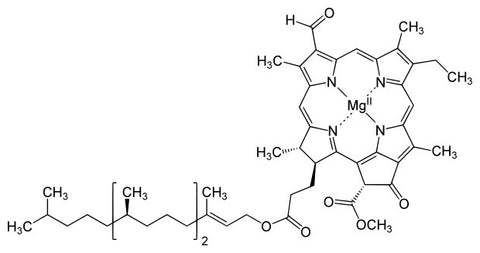Glossary of Algae Culture Terms
Glossary page
Accessory pigments: light-absorbing compounds, found in photosynthetic organisms, that work in conjunction with chlorophyll a. They include other forms of this pigment, such as chlorophyll b in green algal and higher plant antennae, while other algae may contain chlorophyll c or d.Bacteria: Members of the kingdoms eubacteria and archaeabacteria.
Bacteria: Members of the kingdoms eubacteria and archaeabacteria.
Batch culture: a microorganism growing methodology, where a single volume of media is added to an inoculum
Batch culture, semi-continuous: a method of culturing microorganisms where fresh media replaces biomass-rich media on a periodic cycle
Beta Cartotene: β-Carotene is an organic, strongly colored red-orange pigment abundant in algae, plants, and fruits. It is a member of the carotenes, which are terpenoids (isoprenoids), synthesized biochemically from eight isoprene units and thus having 40 carbons. Among the carotenes, β-carotene is distinguished by having beta-rings at both ends of the molecule. β-Carotene is the most common form of carotene in plants and most algae. It can also be extracted from the beta-carotene rich algae, Dunaliella salina. The separation of β-carotene from the mixture of other carotenoids is based on the polarity of a compound. β-Carotene is a non-polar compound, so it is separated with a non-polar solvent such as hexane.
Carbon dioxide: atmospheric gas that is the carbon source for photosynthesis
Carotenoids: Carotenoids, also called tetraterpenoids, are organic pigments that are produced by plants and algae, as well as several bacteria and fungi. Carotenoids can be produced from fats and other basic organic metabolic building blocks by all these organisms. The only animals known to produce carotenoids are aphids and spider mites, which acquired the ability and genes from fungi.[1] Carotenoids from the diet are stored in the fatty tissues of animals, and exclusively carnivorous animals obtain the compounds from animal fat. There are over 600 known carotenoids; they are split into two classes, xanthophylls (which contain oxygen) and carotenes (which are purely hydrocarbons, and contain no oxygen). All are derivatives of tetraterpenes, meaning that they are produced from 8 isoprene molecules and contain 40 carbon atoms. In general, carotenoids absorb wavelengths ranging from 400-550 nanometers (violet to green light). This causes the compounds to be deeply colored yellow, orange, or red. Carotenoids are the dominant pigment in autumn leaf coloration of about 15-30% of tree species, but many plant colors, especially reds and purples, are due to other classes of chemicals.
Chlorophyll-a: Chlorophyll a is a organic chemical soluble specific form of chlorophyll used in oxygenic photosynthesis. It absorbs most energy from wavelengths of violet-blue and orange-red light. It also reflects green/yellow light, and as such contributes to the observed green color of most plants. This photosynthetic pigment is essential for photosynthesis in eukaryotes, cyanobacteria and prochlorophytes because of its role as primary electron donor in the electron transport chain. 
Chlorophyll-b: Is a form of chlorophyll. Chlorophyll b helps in photosynthesis by absorbing light energy. It is more soluble than chlorophyll a in polar solvents because of its carbonyl group. Its color is yellow, and it primarily absorbs blue light. Chlorophyll-b is found in nearly all land plants and in the several divisions of algae.

Chlorophyll-c: Chlorophyll-c is a form of chlorophyll found in certain marine algae, including the photosynthetic Chromista (e.g. diatoms, brown algae) and dinoflagellates. It has a blue-greenish color and is an accessory pigment, particularly significant in its absorption of light in the 447-452 nm region, Like chlorophyll a and chlorophyll b, it helps the organism gather light and passes a quanta of excitation energy through the light harvesting antennae to the photosynthetic reaction center. Chlorophyll c is unusual because it has a porphyrin ring structure and does not have an isoprenoid tail or a reduced ring D, features typical of the other chlorophylls commonly found in algae and plants. Chlorophyll c can be further divided into chlorophyll c1, chlorophyll c2, and chlorophyll c3, plus at least 8 other more-recently-found subtypes.

Chlorophyll-d: Chlorophyll d is a form of chlorophyll. It is present in marine red algae and cyanobacteria which use energy captured from sunlight for photosynthesis. Chlorophyll d absorbs far-red light, at 710 nm wavelength, just outside the optical range. An organism that contains chlorophyll d is adapted to an environment such as moderately deep water, where it can use far red light for photosynthesis, although there is not a lot of visible light.

Conductivity: A method to quantify the amount of dissolved material in water (salinity). Conductivity measures the resistance of an electrical charge across the water. Water with more salt (ions) is a better conductor of electricity and pure water is a very poor conductor of electricity.
Culture media: the growth substrate in which the culture grows
Culture: a mass of biomass that is cultivated. In the case of algae culture, it is usually a single species that has a high population density and few to no 'weed algae'.
Environment, biological: A range of interactions between organisms of the same species or different species.
Environment, chemical: A range of chemical conditions including concentrations of salts, nutrients, pH, alkalinity.
Environment, physical: A range of physical conditions like temperature, humidity, flux of light or radiation
Eurihaline: An organism that can tolerate large changes in salinity.
Inoculum: the initial mass of cells that is placed into the culture flask with the culture media
Macronutrients: “Fertilizer elements” These are a grouping of nutrients that algae need lots of to grow: carbon, nitrogen, phosphorus, potassium
Micronutrients and Trace Metals: This is a group of nutrients that algae need in very small concentrations in order to grow: iron, manganese, magnesium, sulphur
Monoculture: a culture that is of a single species
Oxygen: an atmospheric gas that is a by-product of photosynthesis and central to aerobic respiration
Photosynthesis: The photo-chemical process of converting light energy into chemical energy.
Phycobillin: a class of water soluble proteins used by cyanobacteria and red-algae as accessory pigments to support photosynthesis. See Phycocyanin and Phycoerythrin.
Phycocyanin: A blue colored water soluble pigment like protein complex found in bacteria. It is reported to have benefits for humans if consumed orally. Its blue color is used as a food coloring and also used as a fluorescent dye.
Phycoerythrin: A red colored water soluble photosynthetic pigment found in bacteria and red-algae.
Salinity: A measure of the amount of dissolved materials in water. Seawater has roughly 35g/L salts.
Salts: Loosely defined a salt is any mineral that is dissolvable in water.
Spirulina: common name for the cyanobacteria Arthrospira sp.
Stenohaline: An organism that is not tolerate changes in salinity.
Trichome of Spirulina: A trichome is a single filament or thread like structure of spirulina. It is composed of a number of cells working together as a colony.
Xanthophyll cycle: Algae Research Supply’s founder researched this process during his education. The xanthophyll cycle involves the enzymatic removal of epoxy groups from xanthophylls (e.g. violaxanthin, antheraxanthin, diadinoxanthin) to create so-called de-epoxidised xanthophylls (e.g. diatoxanthin, zeaxanthin). These enzymatic cycles were found to play a key role in stimulating energy dissipation within light-harvesting antenna proteins by non-photochemical quenching- a mechanism to reduce the amount of energy that reaches the photosynthetic reaction centers. Non-photochemical quenching is one of the main ways of protecting against photoinhibition. In higher plants, there are three carotenoid pigments that are active in the xanthophyll cycle: violaxanthin, antheraxanthin, and zeaxanthin. During light stress, violaxanthin is converted to zeaxanthin via the intermediate antheraxanthin, which plays a direct photoprotective role acting as a lipid-protective anti-oxidant and by stimulating non-photochemical quenching within light-harvesting proteins. This conversion of violaxanthin to zeaxanthin is done by the enzyme violaxanthin de-epoxidase, while the reverse reaction is performed by zeaxanthin epoxidase. In diatoms and dinoflagellates, the xanthophyll cycle consists of the pigment diadinoxanthin, which is transformed into diatoxanthin (diatoms) or dinoxanthin (dinoflagellates) under high-light conditions.
Xanthophyll pigments: Xanthophylls are yellow pigments that occur widely in nature and form one of two major divisions of the carotenoid group; the other division is formed by the carotenes.


